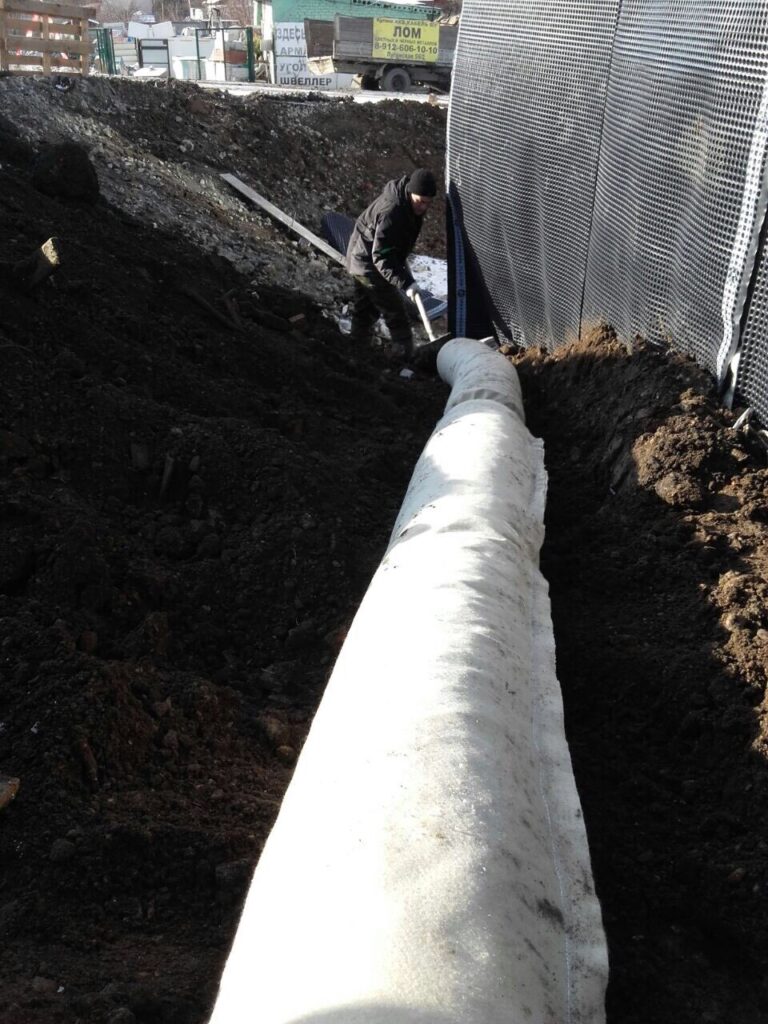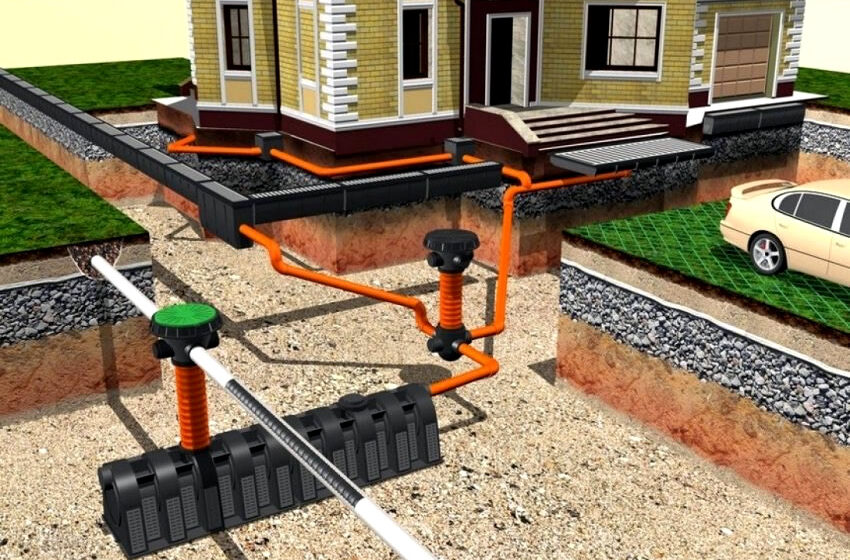Drainage around the house is an effective way to protect building elements and outbuildings from moisture. The creation of such a drainage system is especially important if groundwater is located at a depth of less than 2.5 meters. This is also necessary if the residential structure is located on a site prone to seasonal or weather-related flooding. How to properly make drainage around the house with your own hands – step-by-step instructions. Installing a drainage system is not a difficult task, but to accurately organize it you need to follow simple rules.
System Description
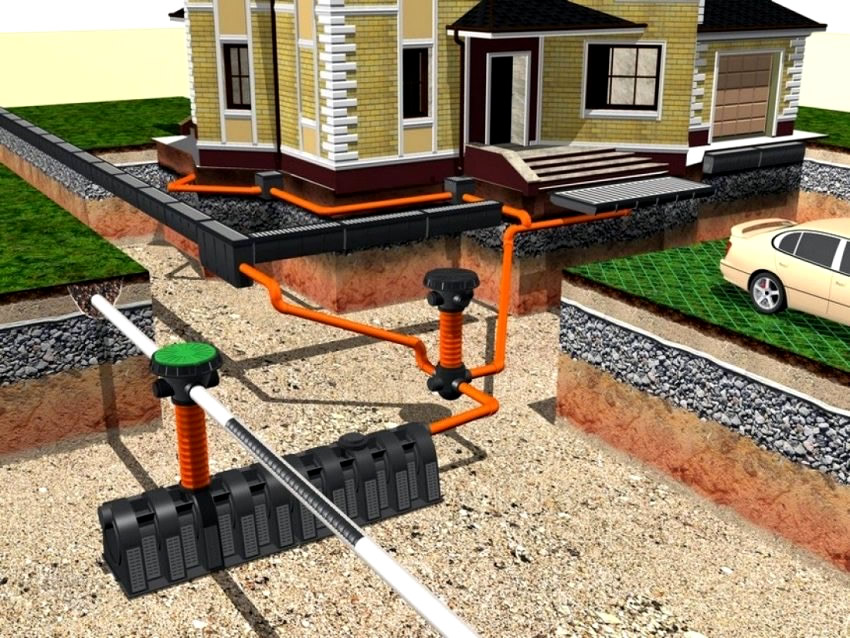
To effectively drain groundwater, rain, and melt water, which not only destroys structural elements of a building, fills the basement and cellar, but also reduces the bearing capacity of the soil, there are several methods for constructing drainage. Each of them has its advantages and disadvantages. Therefore, the decision on which type to choose and how best to make drainage around the house remains with the owner himself.
The design and location of the system for protecting against excess moisture is selected taking into account the terrain, the presence of buried rooms, the depth of groundwater, and the type of soil. By design, the following drainage systems are distinguished: backfill, open, and closed.
How to make drainage around the house with your own hands
Depending on what area of land needs to be drained, what type and what depth of drainage will be most effective, the location of the entire system is chosen. If necessary, eliminate the impact of water on the foundation and basements, and create wall or ring drainage. The first type is appropriate if there is a basement or basement and is located near the foundation walls. Trenches are dug around the perimeter, a perforated pipe is laid (below the basement floor level) and covered with crushed stone or gravel. The wall is fenced off with a layer of geotextile with one-way conductivity. Water from the ground does not reach the walls, but enters the drainage pipe and is discharged to a safe place.
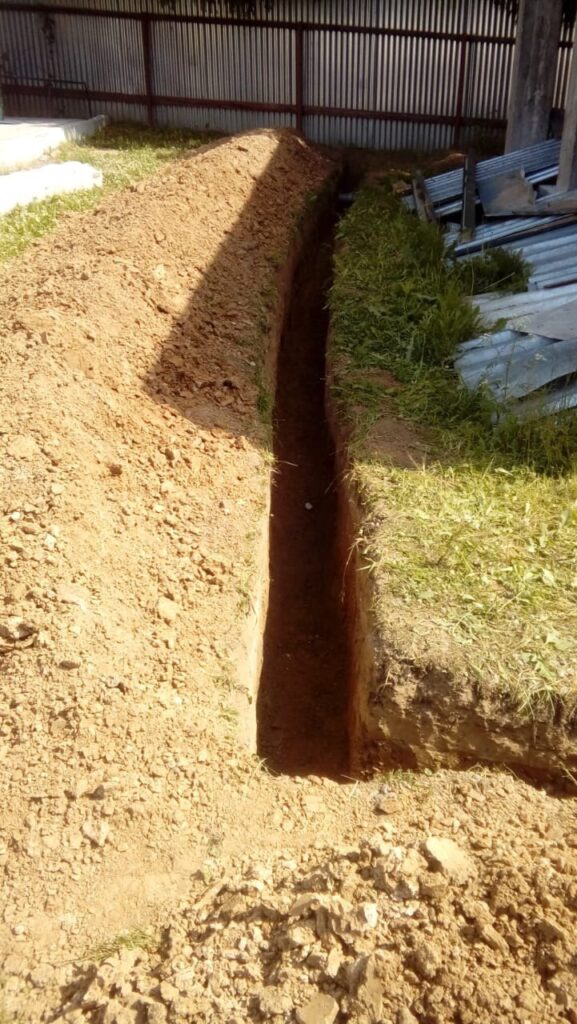
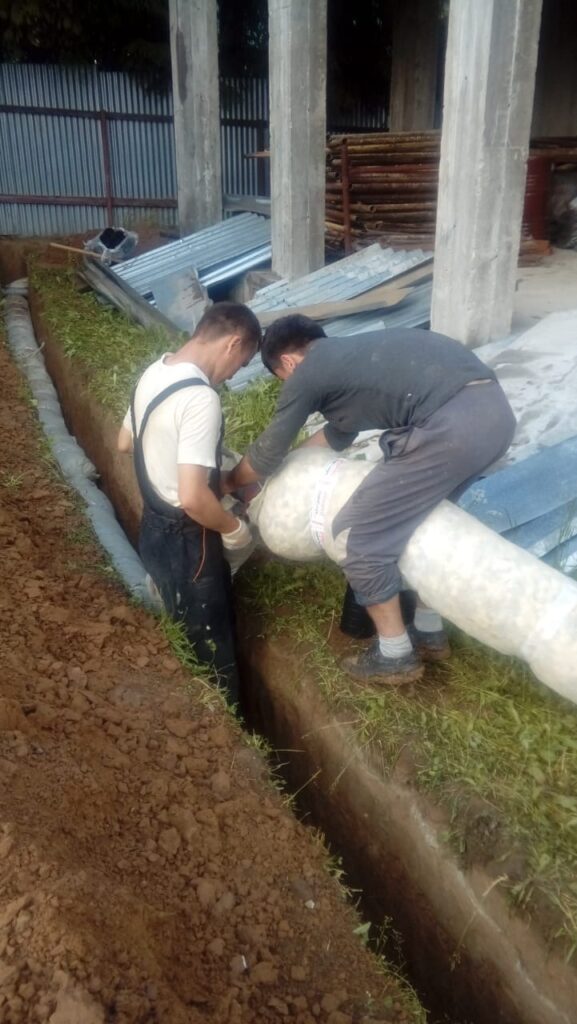
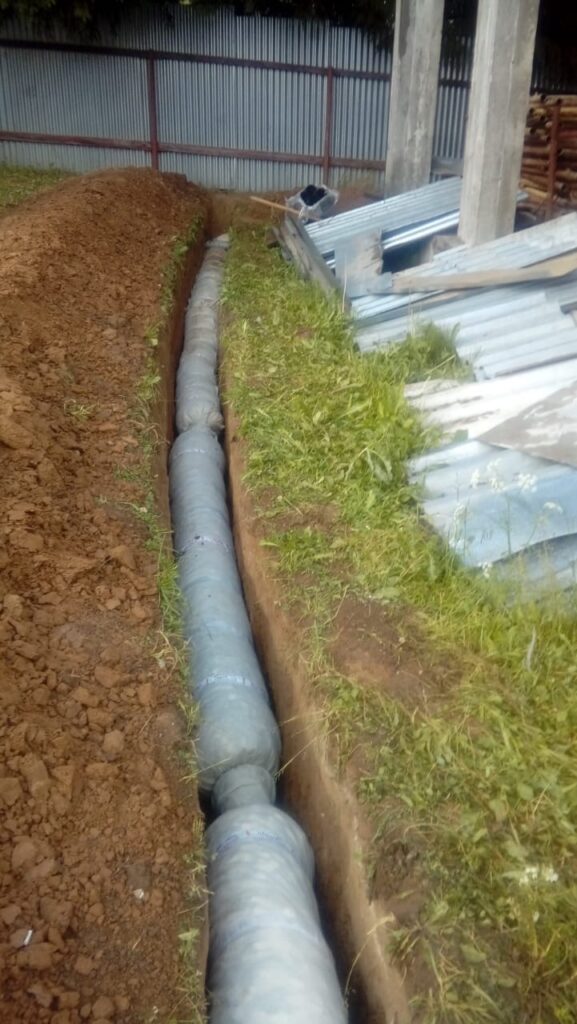
For effective drainage, you need to know how to properly drain a place. To do this, the drainage system is located around the entire perimeter. The most labor-intensive, expensive, but also the most effective method is a closed system using plastic pipes. The price of such perforated pipes is affordable for any family budget. It perfectly removes excess water from the site, preventing mold from developing, destroying garden and vegetable plants, destroying load-bearing building elements, and not spoiling the appearance of the house.

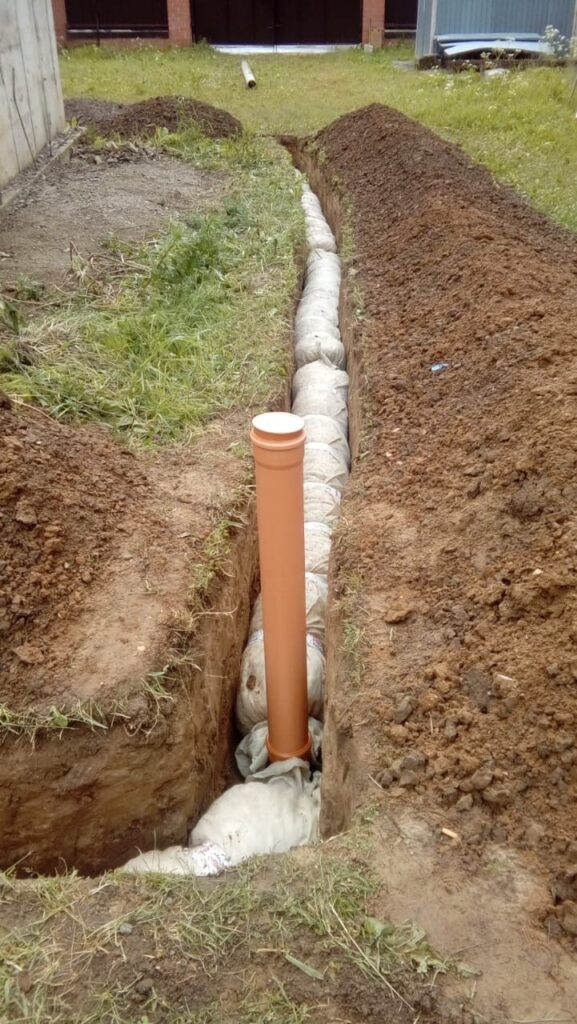
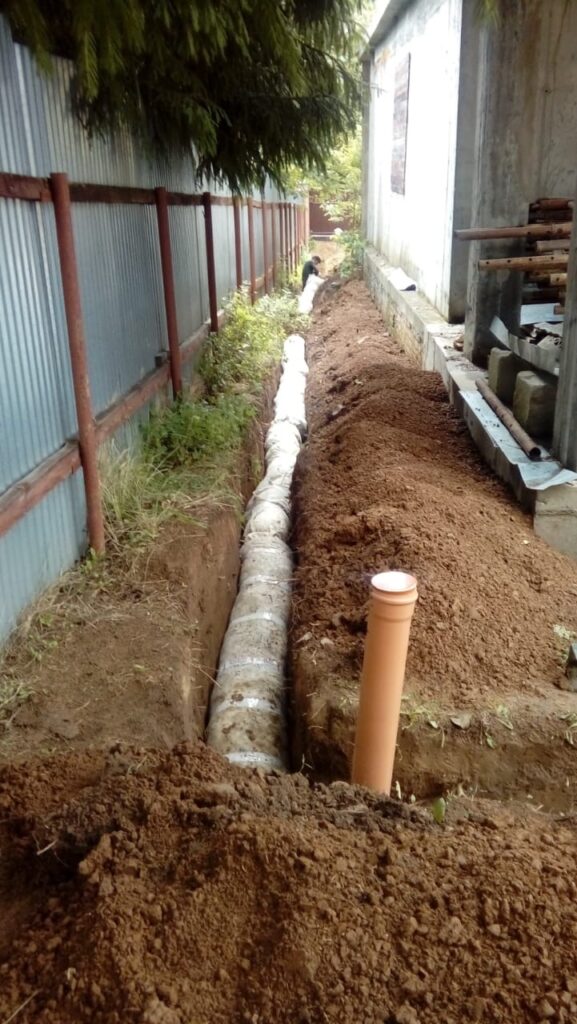
To create such a drainage, you need to perform several operations:
- draw a diagram of the future system on paper indicating the dimensions and distance from the edge of the site, as well as taking into account the landscape design and location of plantings;
- will mark future routes on the site itself using paint or sand;
- with your own hands or using small equipment, dig trenches along marked routes (depth and width depending on the level of groundwater and the diameter of the pipes used, which vary from 70 to 150 cm in depth and from 25 to 40 cm in width);
- line the bottom and walls of the trench with geotextile (the material will significantly reduce clogging of the drainage and significantly increase the period of effective operation);
- Apply a layer of sand (about 15 cm) to the bottom, and then a layer of crushed stone or gravel (about 20 cm);
- using the device and the gravel layer, set the desired level of slope;
- if the site area is large, it will be necessary to create inspection wells at a distance of 50 meters from each other in places where pipes bend or change the slope;
- perforated pipes are laid (best with a filter element – fiberglass, coconut fiber, non-woven or needle-punched textiles) and connected using fittings;
- the most optimal diameter of the drainage pipe, ensuring good water drainage, is considered to be 110 mm;
- the slope is checked again (can be easily done using a stretched rope), and it is necessary to create a uniform level, eliminating sagging of the pipe;
- the drainage system must be below the soil freezing level;
- the pipes are covered with crushed stone or gravel on top; the thickness of the layer should not reach the soil surface of about 15 cm;
- Geotextiles are laid on the crushed stone layer and the soil is filled.
There is no need to be afraid of increasing the cost of creating drainage: purchasing additional geotextiles and separating all layers from each other will only increase the efficiency and service life of the entire system. Following these simple instructions will allow you to install long-term water protection with your own hands and preserve your property and health throughout the entire life of your home.
Backfill design
The backfill drainage structure is a deep trench (below the upper groundwater level) filled with coarse gravel, crushed stone, or other rubble material. The upper part of the trench is covered with a layer of turf, and to reduce the swimming and silting of the passage space, the walls are laid with a layer of geotextile material. Such drainage is easy to create, low cost, long service life, and no need for maintenance.
In addition, in its final form, it does not disrupt the overall appearance of the site and does not introduce dissonance into the landscape design. The disadvantages include the low throughput of the water flow and the impossibility of cleaning the drainage channel if it is clogged.
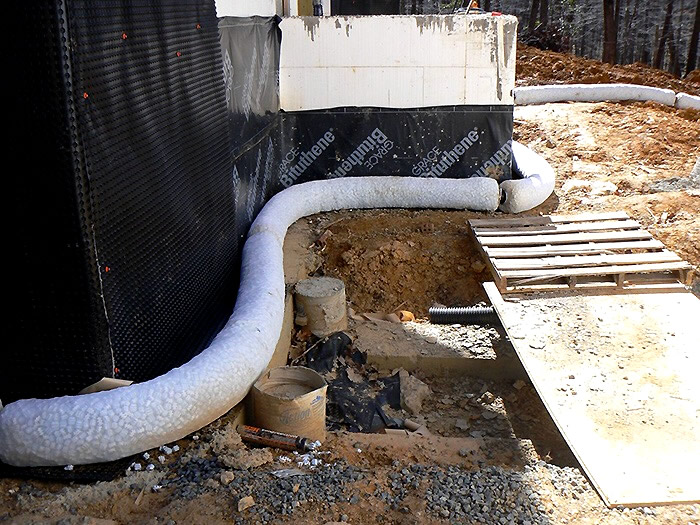
Open-type drainage device
The open option or surface drainage involves the creation of shallow open trenches (about 0.5 meters), through which rain and melt water is drained into special containers or discharged outside the site. To prevent swimming and destruction of the trench walls, plastic or metal trays are placed in them. Additional security is provided by the grilles placed on top.
How to properly make a closed drainage system
The most complex and labor-intensive type of drainage is the closed type. When organizing it, trenches are dug, a layer of gravel or coarse crushed stone is poured onto the bottom, and then perforated pipes are laid. From above, the entire structure is again covered with crushed stone or gravel and at the end, a layer of soil is applied. To increase the efficiency of water drainage and reduce siltation, filter material (geotextile) is used on perforated pipes. The materials used for the manufacture of perforated pipes are steel, asbestos cement, and ceramics, but now almost all types have given way to plastic. Corrugated plastic pipes, which already have holes in their finished form, are long and easy to install, and have become widespread.
When choosing any method of removing excess moisture, you should take into account the slope of the drainage channels. For proper operation of the system, the level of inclination towards the outlet to an artificial or natural water intake must be at least 3° along one branch or 1 cm per linear meter. When deciding how to properly tilt the drainage, you can use the adjustment of the thickness of the gravel cushion.
